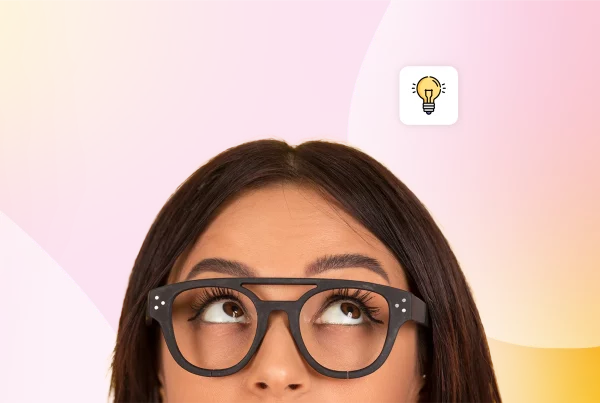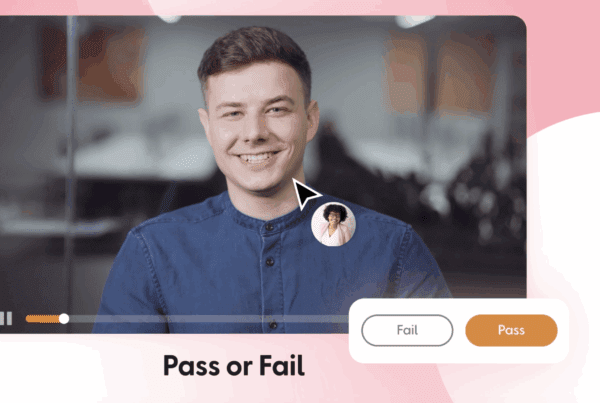There’s learning, and then there is effective learning. 🎓
Mastering new skills on the job isn’t just an added bonus; it is a necessity for today’s workforce.
But let’s be honest: not all workplace training is created equal, and not all organisations know how to plan and deliver a quality learning programme. ⚖️
We’re guessing you’ve landed here because you’re in the process of reviewing L&D within your organisation?
You could say that we know a thing or two about effective L&D, so let’s explore what separates the “meh” from the “wow” when it comes to learning in the workplace. 🏆
We’ll break down the key characteristics that turn bog-standard and ordinary training sessions into game-changing experiences, keeping your team ahead of the curve and on their way to learning greatness. 💪
But first…
What exactly is Effective Learning?
Effective learning isn’t just about absorbing information; it’s about the individual actually understanding and knowing how to apply their new knowledge or skills. 💡
When learning is properly executed, employees grasp new concepts quickly and can use them to improve their performance and contribute to your business’s overall goals and objectives.
Sounds good, right?
We recommend using our list below to determine whether your organisation’s learning cycle is on the right track or has some improvements to make.
Try to be as objective as you can when you answer these questions.
We won’t judge you! 😃
What are the 15 characteristics of Effective Learning?
1. Is your learning material actually engaging? ✨
Your learning material must capture and hold your learners’ interest, making the learning process both enjoyable and stimulating as after all, nobody wants to sit in front of a PowerPoint presentation all day or listen to a trainer droning on for hours on end.
2. Is your content genuinely relevant? 📚
The content you share must directly apply to the learners’ roles and responsibilities, ensuring they see the value in their learning. If it’s not relevant to them, they shouldn’t be taking part in the session.
3. Does your learning curriculum offer a practical application? ⌨️
Your learners should immediately be able to apply what they’ve learned in real-world, on-the-job situations, reinforcing their understanding and improving their overall job performance.
4. Are you supporting continuous learning? ♻️
Learning shouldn’t be a one-time event but an ongoing process with regular learning and development opportunities available to your staff.
5. Have you created a supportive learning environment? 🤝
Do you offer resources, mentors, and a general culture that encourages and facilitates learning, making it easier for employees to seek and share knowledge openly?
6. Are your objectives clear?📋
Your learners should know what they are expected to achieve by the end of the training and, most crucially, how they will be measured.
7. Are you encouraging your learners to interact? 👏
Incorporate discussions, hands-on activities, and simulations to enhance understanding. We know we keep harping on about it, but the more engaging your learning plan is THE BETTER!
8. Are your sessions innovative and forward-thinking? ⏩
Learning should be focused on the future of the organisation as well as the here and now, whether that be through new processes or technologies, for example.
9. Is your learning strategy fully inclusive? 🏳️🌈
Ensure your learning is fully inclusive to all. Be sure to adapt accordingly for any members of your team who may need extra consideration for their learning, such as extra time for assessment.
10. Is your learning personalised? 👭
Similarly to the above, be sure to tailor your content to fit different learning styles and individual needs. One size doesn’t fit all when it comes to people learning new skills, which is something we’ve spoken about in our previous blog, the learner-centred approach and its benefits. Check it out!
11. Are you embracing feedback and assessments? 🗣️
As an organisation, you must provide regular feedback and assess progress regularly to help your learners improve.
12. Is your learning cumulative? 🌱
It is true what they say that each learning experience adds to the foundation of what has already been learned, allowing for a deeper and more sophisticated understanding over time.
13. Do you provide access to relevant resources? 📒
Do you have a good availability of materials and tools that your learners can refer to as and when needed?
14. Is your learning flexible? 🤸
Learning must be flexible. Do you enable your learners to access their training at their own pace and on their schedule?
15. Are you measuring the effectiveness of your learning? 🌡️
It is vital to regularly evaluate the impact of your training based on the 14 points above and, crucially, make adjustments as needed.
If you’re enjoying this blog post, you may also enjoy our guide to the Learning Curve: Theory, Examples & Formula.
How to Execute Effective Learning for L&D
Are you looking for more ideas for reaching new heights through learning and development within your organisation?
Let’s start with some useful definitions and examples…
Active Engagement👂🏻🗣️
What is it?
Your learners are fully involved and actively participating in their own learning experience. This means they aren’t just passively receiving information but are interacting with the material, the instructor, and their peers.
Examples
Solving real-world problems ✅
Practising skills in a meaningful context ✅
Critical Thinking ✅
Goal Orientation 🥅
What is it?
Goal orientation refers to your learners’ mindset and approach towards their educational and professional objectives. It influences how they pursue their goals and respond to challenges.
Examples
Setting clear learning goals ✅
Understanding the purpose of learning ✅
Focusing on mastering specific skills or knowledge areas ✅
Constructive Feedback 🗣️
What is it?
Your learners receive timely and constructive feedback that helps them understand their progress, identify areas for improvement, and adjust their strategies accordingly.
Examples
Comments ✅
Peer reviews ✅
Self-assessment ✅
Automated feedback in your learning experience platform ✅
Active Reflection 💭
What is it?
Your learners regularly reflect on their experiences, learning processes, and outcomes to deepen their understanding and improve future learning efforts.
Examples:
Journaling ✅
Group discussions ✅
Self-assessment activities ✅
Creating learning portfolios ✅
Scaffolded Support 👐🏻
What is it?
Your learners receive appropriate support and resources that match their current level of understanding and gradually increase in complexity as they develop.
Examples
Step-by-step instructions ✅
Visual aids ✅
Peer tutoring ✅
Metacognitive Strategies 🗺️
What is it?
Your learners use strategies to monitor, control, and regulate their own learning processes, such as planning, organising, and evaluating their understanding and performance.
Examples
Self-questioning ✅
Goal-setting ✅
Time management ✅
Adjusting learning approaches based on performance feedback ✅
Motivation and Interest 🙋🏼
What is it?
Your learners are genuinely motivated and find the learning process engaging and relevant, leading to sustained interest and effort.
Examples
Connecting learning content to personal interests ✅
Real-world applications ✅
Offering choices in learning activities ✅
Collaborative Learning 🧑🏻🤝🧑🏻
What is it?
Learning occurs through interaction and collaboration with others, fostering social skills and the exchange of different perspectives.
Examples:
Group projects peer tutoring ✅
Discussion forums ✅
Team-based problem-solving tasks ✅
Contextual Learning 🌎
What is it?
Learning is connected to real-life contexts, making it more relevant and more accessible to apply outside the learning session.
Examples
Case studies ✅
Roleplays ✅
Role swaps ✅
Variety of Learning Activities 🎲
What is it?
Using different methods and techniques to help people learn. This approach recognises that everyone learns differently and keeps the learning experience engaging and effective.
Examples:
Lectures and presentations ✅
Quizzes ✅
Hands-on activities ✅
Interactive digital tools ✅
Emotional and Psychological Safety 🧠
What is it?
A supportive learning environment where learners feel safe to take risks, make mistakes, and express their ideas.
Examples
Providing emotional support ✅
Fostering a sense of belonging ✅
Promoting respect and inclusion ✅
Application and Transfer of Knowledge 🗣️
What is it?
Learning activities that are designed to facilitate the transfer of knowledge and skills to new contexts and real-world situations.
Examples
Problem-solving tasks that require applying learned concepts ✅
Projects that simulate the real world ✅
Challenges, and opportunities for experiential learning ✅
Adaptive Learning📚
What is it?
Learning experiences that are tailored to individual learner needs, preferences, and progress to optimise learning outcomes.
Examples
Adaptive software ✅
Formative assessments to guide learning ✅
Use of Technology 💻
What is it?
The effective integration of technology that enhances learning through access to diverse resources, interactive tools, and opportunities for remote learning.
Examples
Online courses ✅
Virtual simulations ✅
Digital collaboration tools ✅
Lifelong Learning Mindset 🧠
What is it?
Your learners develop a mindset that values continuous learning and self-improvement.
Examples
Adaptability ✅
Curiosity ✅
Self-directed learning ✅
In summary…
Effective learning is the cornerstone of any thriving organisation, transforming bog-standard training into genuinely impactful experiences.
By implementing what we’ve discussed in this article and making a big shift towards prioritising effective learning, you’re not only investing in your employees’ growth but also securing your organisation’s future success.
Did you know that over 100 L&D teams trust Thirst to support them with rolling out a truly personalised learning programme? 🫶
You can do this through our AI-powered learning experience platform that centralises all your learning materials, knowledge, and resources in one convenient hub!
Our simple and engaging user interface makes learning easy for your team. This user-friendliness sets Thirst apart from other learning management systems and learning experience platforms, ensuring a smooth learning experience for everyone.
Got 2 Minutes?
If your organisation is suffering as a result of disengaged learners, then Thirst can help. 🔥
As an AI-powered learning platform, Thirst is empowering organisations big and small to level up learner engagement and create learning experiences designed for the modern learner.
Take the guided tour today and see Thirst in action.
For more e-learning insights, resources and information, discover the Thirst blog.
You may also enjoy:
Zone of Genius: What is it and How to Find Yours | The Ultimate Employee Offboarding Checklist [+Free Template] | What is a Knowledge Gap? (Plus, How to Address Them in 10 Steps)







